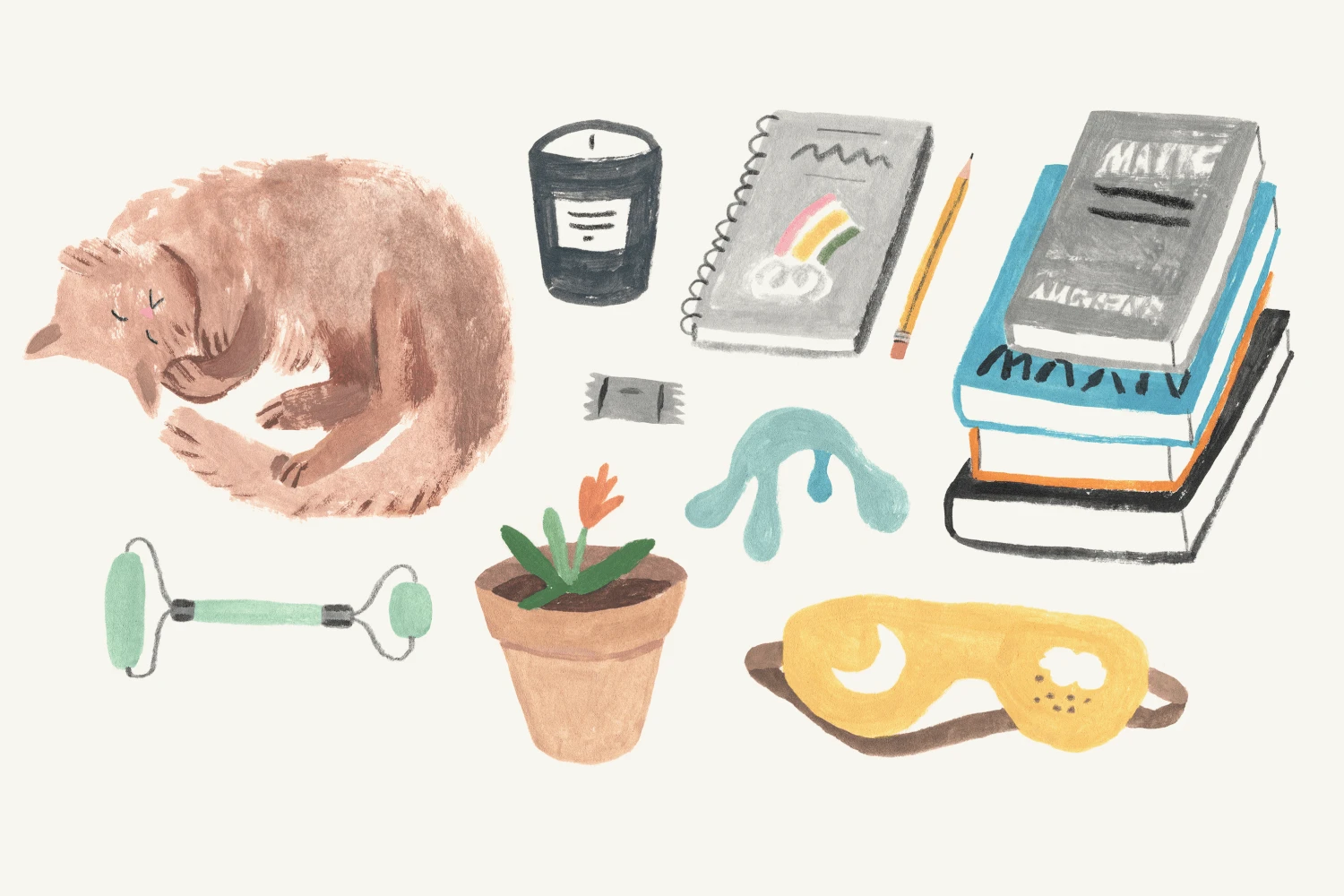What’s the best thing to do for sleep?
How can I fix insomnia fast?
What can help me sleep?
One in four Americans develop insomnia each year, as a 2018 study discovered.
And many more aren’t getting enough quality sleep.
What’s the best thing to do for sleep?
According to data from the Centers for Disease Control (CDC), one in three U.S. adults aren’t getting enough sleep.
And the National Institutes of Health estimates anywhere between 50-70 million Americans struggle with sleep disorders.
It’s a serious issue. Quality sleep is essential to mental health and wellbeing.
It’s understandable that we’re looking everywhere for solutions, sleep therapy, sleep coaching, and sleep help.
Does CBT (cognitive behavioral therapy) help for sleep and insomnia? Decisively, yes.
In fact Americans’ Google searches for “sleep help” have increased 800% in the past two decades.
We’re asking Google for more help than ever in finding us “natural sleep aids.”
As evidence, U.S. sales of the hormone melatonin grew 43% in 2020.
And, since 2017, Americans’ curiosity has been spiking on the question: "Does cbd help sleep?"
The answer: Maybe. Possibly in higher doses. However, study-based research on CBD for sleep shows some promise, but is not yet conclusive. though CBD (cannabidiol) has actually been found to promote wakefulness in lower doses.
But, are we even asking the Google machine the right questions?
For those of us who struggle with sleep, a key question to ask is: Does CBT (cognitive behavioral therapy) help for sleep and insomnia?
The answer: Decisively, yes. The American College of Physicians (ACP) recommends that all patients receive CBT-I as the initial treatment for chronic insomnia disorder. Even a single session of CBT-I has been shown to help people with acute insomnia.
Read on to find out more about CBT-I and how CBT works to help sleep and end insomnia and how quickly we can see results.

What’s CBT, and how does it work?
Before we delve into CBT-I, it’s important to define the first part of the treatment’s title—CBT aka cognitive behavioral therapy.
“CBT is a type of therapy often used to deal with depression, anxiety, PTSD, panic disorders, phobias, and other mental health conditions,” says Dr. Po-Chang Hsu, M.D., medical expert for Sleeping Ocean.
CBT focuses on thoughts, beliefs, and perceptions—and how those thoughts, beliefs, and perceptions ultimately shape how you feel and behave.
“CBT-I takes the principles of CBT and applies them to insomnia.” -therapist Melissa Milbert, LPC
During CBT, you work with your therapist to identify unhealthy, unhelpful, and/or untrue thought patterns, perceptions, or cognitive distortions—and then take active steps to challenge those thoughts, perceptions, or distortions and, ultimately, change them.
When you change your thoughts, you can change the way you feel, the way you behave, and the way you experience the world—and that’s the basis of CBT.
What’s the meaning of CBT-I? (And did we really need an additional letter?)
What’s CBT-I, and what’s that “I” added on there for?
The “I” is for insomnia. (We see you, sleepless people in Seattle, Phoenix, New York, Los Angeles, and San Francisco!)
CBT-I has been proven to be extremely effective at treating insomnia.
“CBT-I takes the principles of CBT and applies them to insomnia,” says Monarch by SimplePractice therapist Melissa Milbert, LPC, who regularly uses CBT-I in her practice to help clients with sleep issues.
How can CBT-I help with insomnia and sleep?
“CBT-I teaches you to replace unhelpful thoughts and behaviors which feed into your insomnia with positive, helpful thoughts and behaviors to help you get a restful sleep,” says Dr. Katherine Hall, Ph.D., sleep psychologist and sleep coach for online sleep therapy program Somnus Therapy.
CBT-I has been proven to be extremely effective at treating insomnia, and the modality approaches the issue from a variety of angles.
“CBT-I is a multicomponent treatment as it involves cognitive, behavioral, educational, and homework components,” says Hall.

A key component of CBT-I is improving your sleep space
Sleep—at least most of the time—takes place in the bedroom.
But for many people with sleep issues, because it’s been the setting for so many sleepless nights and waking up at 3 a.m. or 4 a.m., their bedrooms can actually make it harder to fall asleep.
According to Milbert, a key component of CBT-I is transforming the bedroom (and the sensory bedroom experience, including lighting and activities) in order to optimize our behavior and the environment for sleep.
This includes strictly limiting bedroom activities to sleeping and sex, removing stimuli from the bedroom—like TVs, cell phones, or harsh lighting—and creating a sleep hygiene routine, including consistent bedtime and wake schedule throughout the week.
Cognitive restructuring is essential to CBT-I
Since CBT is all about changing thought patterns, it makes sense that CBT-I aims to change thoughts that interfere with your ability to get a good night’s rest.
“Cognitive restructuring tackles the common thought distortions that can become sleep-interfering,” says Milbert.
For example, many of us who struggle with sleep issues develop anxious thoughts about our ability to fall asleep—and those anxious thoughts can end up keeping us awake—creating a vicious cycle.
“The frustration and worry of repeatedly not sleeping can reinforce negative thinking patterns that in and of themselves can get in the way of sleep,” according to Milbert.
CBT-I can help you identify, challenge, and change both the thoughts (for example, worrying that you’re not falling asleep fast enough or that you’ll be exhausted the next day) and the behaviors (such as tossing and turning in bed for hours or constantly checking your alarm clock to see how much time you have before you need to wake up) that are getting in the way of your ability to sleep.

Who wouldn’t enjoy some ‘relaxation training?’
Being able to unwind and relax plays a huge role in your ability to drift off to sleep, and tools and techniques to invite relaxation are an important component of CBT-I.
“Relaxation training serves to decrease arousal and vigilance, a skill that is essential to sleep,” says Milbert.
“Techniques like progressive muscle relaxation, breathing exercises, guided imagery, meditation, mindfulness, biofeedback, and guided imagery can reduce body tension, increase feelings of wellbeing, and prepare the mind for sleep.”
Believe it or not, ‘sleep restriction’ is part of CBT-I
As mentioned, people with sleep issues spend a lot of their time in bed not sleeping.
One way CBT-I changes that is by limiting the amount of time you actually stay in bed.
“By restricting the amount of time spent in bed, the sleep drive can be increased,” says Milbert.
So, for example, if you usually spend nine hours in bed—but typically only spend five and a half of those hours sleeping—your CBT-I therapist might suggest you restrict your time in bed to six hours.
Then, as more of your time in bed becomes actual sleep time, you can gradually increase the amount of time you spend in bed—and, hopefully, the amount of that time that’s spent sleeping.
“This particular technique can be difficult as it often causes some daytime sleepiness at the beginning,” says Milbert.
Depending on your background and medical history, your therapist may or may not recommend sleep restriction as part of your CBT-I program.

CBT-I at-home assignments
There are some forms of therapy where showing up to a weekly session is enough to see results. But CBT-I is not one of those forms of therapy.
“CBT and CBT-I are collaborative treatments,” says Hsu. “This means patients need to work with their therapists to see results.”
During CBT-I treatment, you can expect assignments from your therapist, like keeping a sleep diary or writing down the thoughts that keep you awake at night, that you’ll need to finish in between sessions.
Will it take some effort on your part?
Yes. However, the work is what will help you get results—and a better night’s sleep!
“It may require some effort, but it’s worth it,” says Hsu.
How long does CBT-I take to work?
As mentioned, research has shown that CBT-I can be extremely effective in treating insomnia—and it doesn’t take long to create results.
“On average, patients can see significant improvements within the first two months of therapy,” Hsu explains.
But while many people experience relief from insomnia symptoms rather quickly, it’s important to recognize that results can vary from person to person.
“The result of CBT-I will depend on the severity of insomnia and many other aspects, for example, accompanying disorders,” says Hsu.
Find a therapist with CBT and CBT-I experience
Insomnia and sleep issues can make it hard to feel fully engaged and present in your day. Whats more, getting quality sleep is essential to mental health and wellbeing.
If you’re struggling with insomnia, CBT-I is one of the most effective treatments to help you get back on track—and back to sleeping through the night.
The Monarch Directory by SimplePractice can help you find a therapist who specializes in CBT to discuss whether CBT-I might help you resolve sleep disturbances.
You can browse therapists who accept your insurance, and book a telehealth video session, an in-person therapy session, or a free 15-minute initial consultation.
You can quickly and easily view their calendars and book a therapy session to prioritize improving your sleep.
READ NEXT: Why Do You Keep Waking Up at 3 a.m., 4 a.m. Every Night?
Need to find a therapist near you who specializes in CBT? Check out the Monarch Directory by SimplePractice to find therapists near you with availability and online booking.





